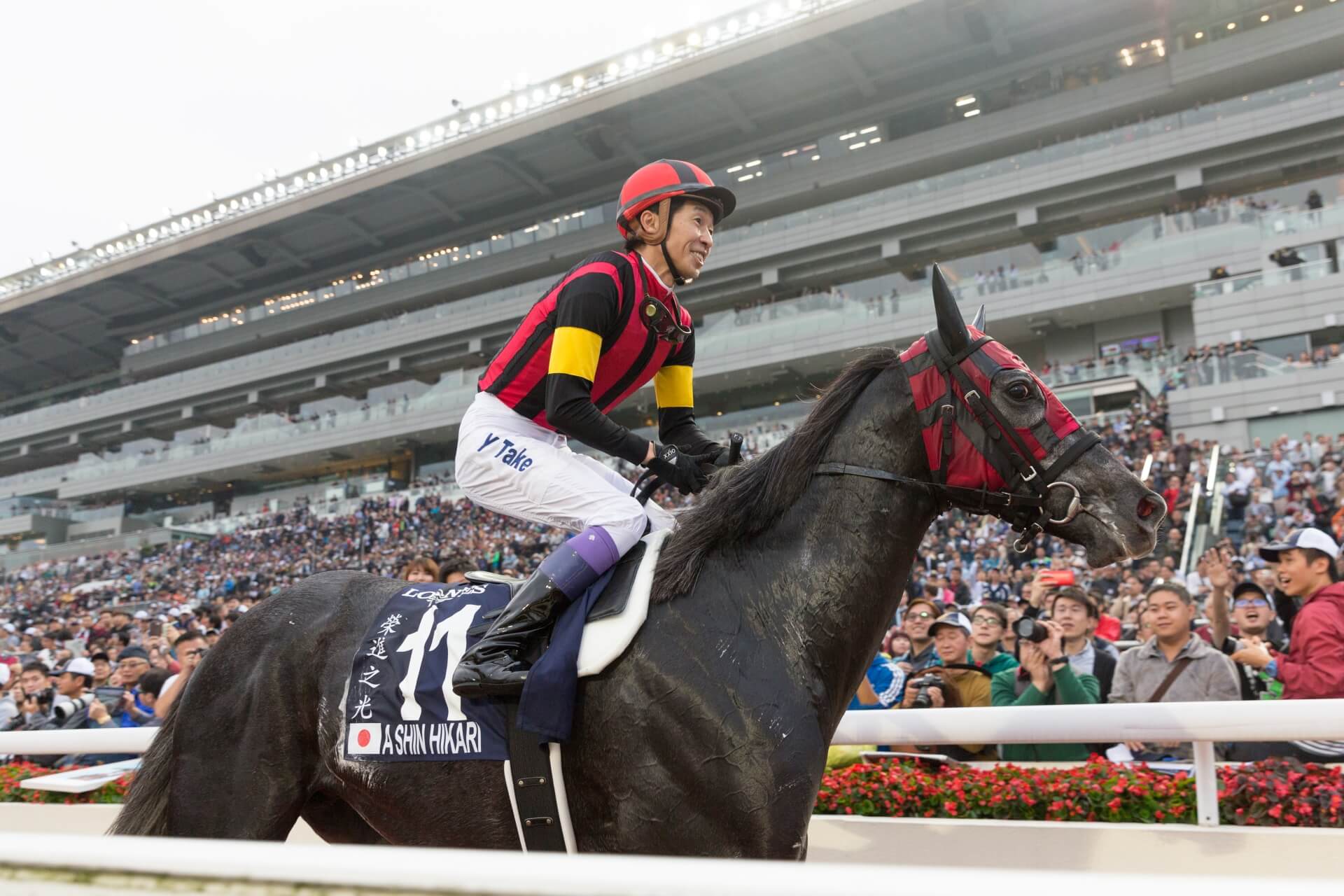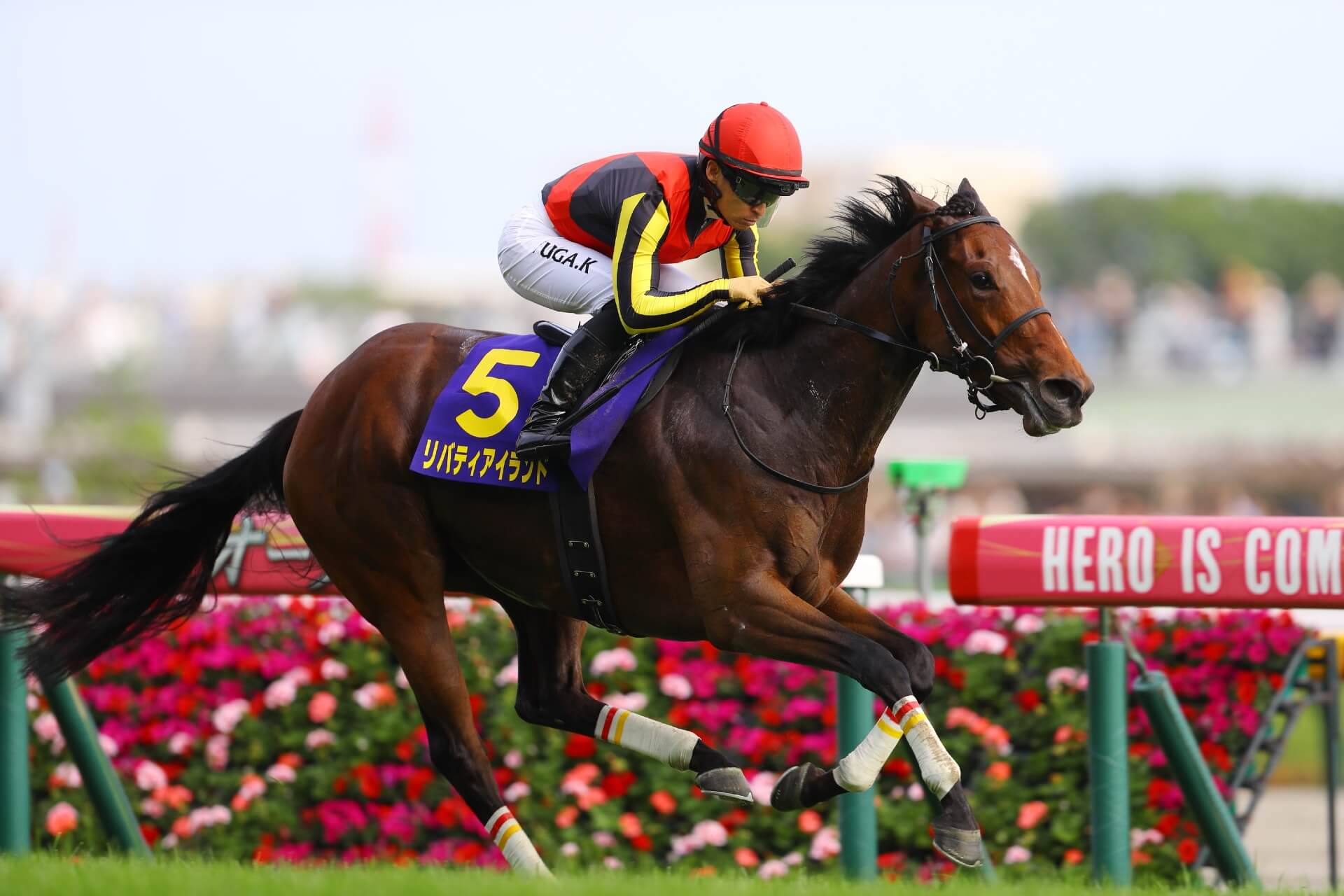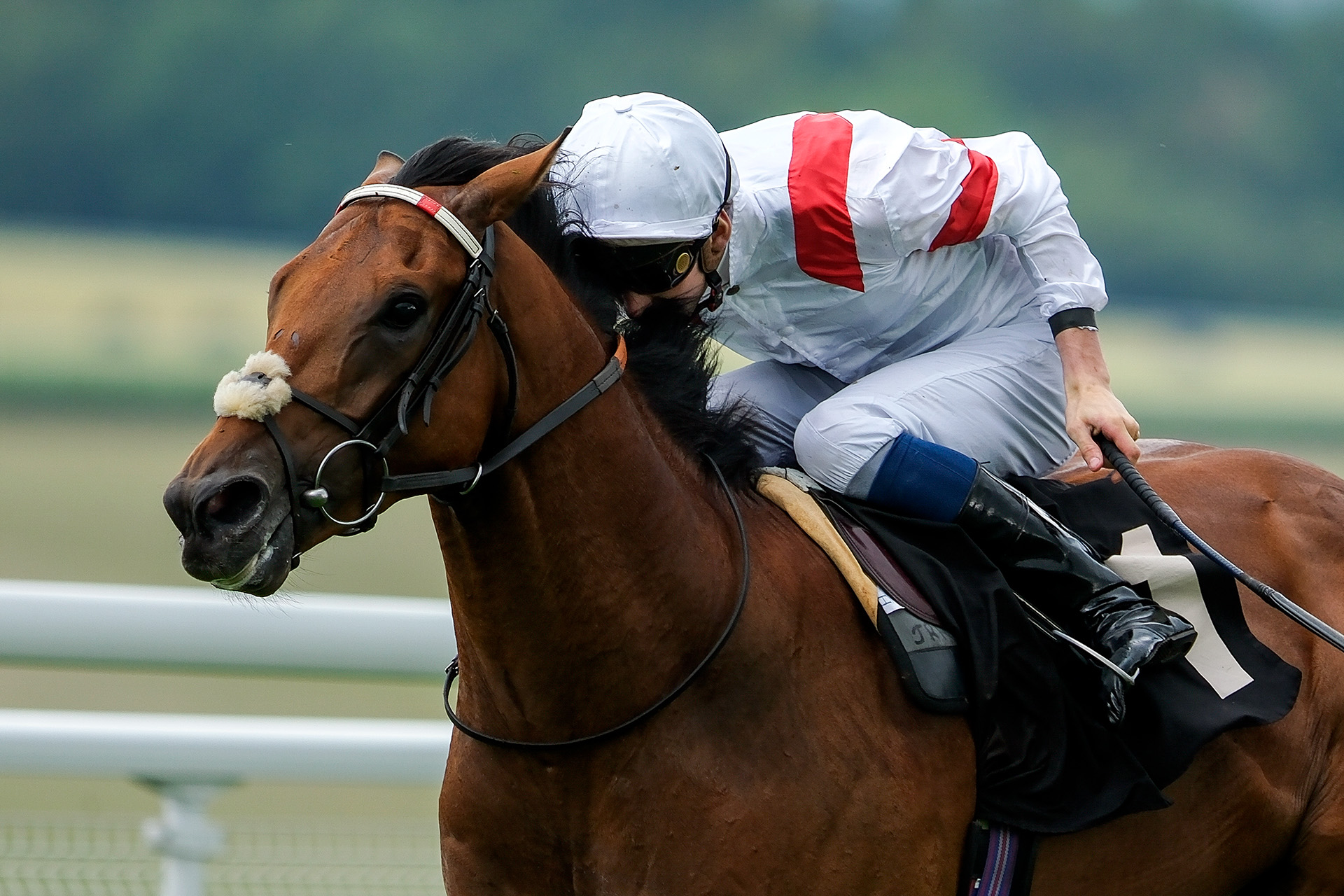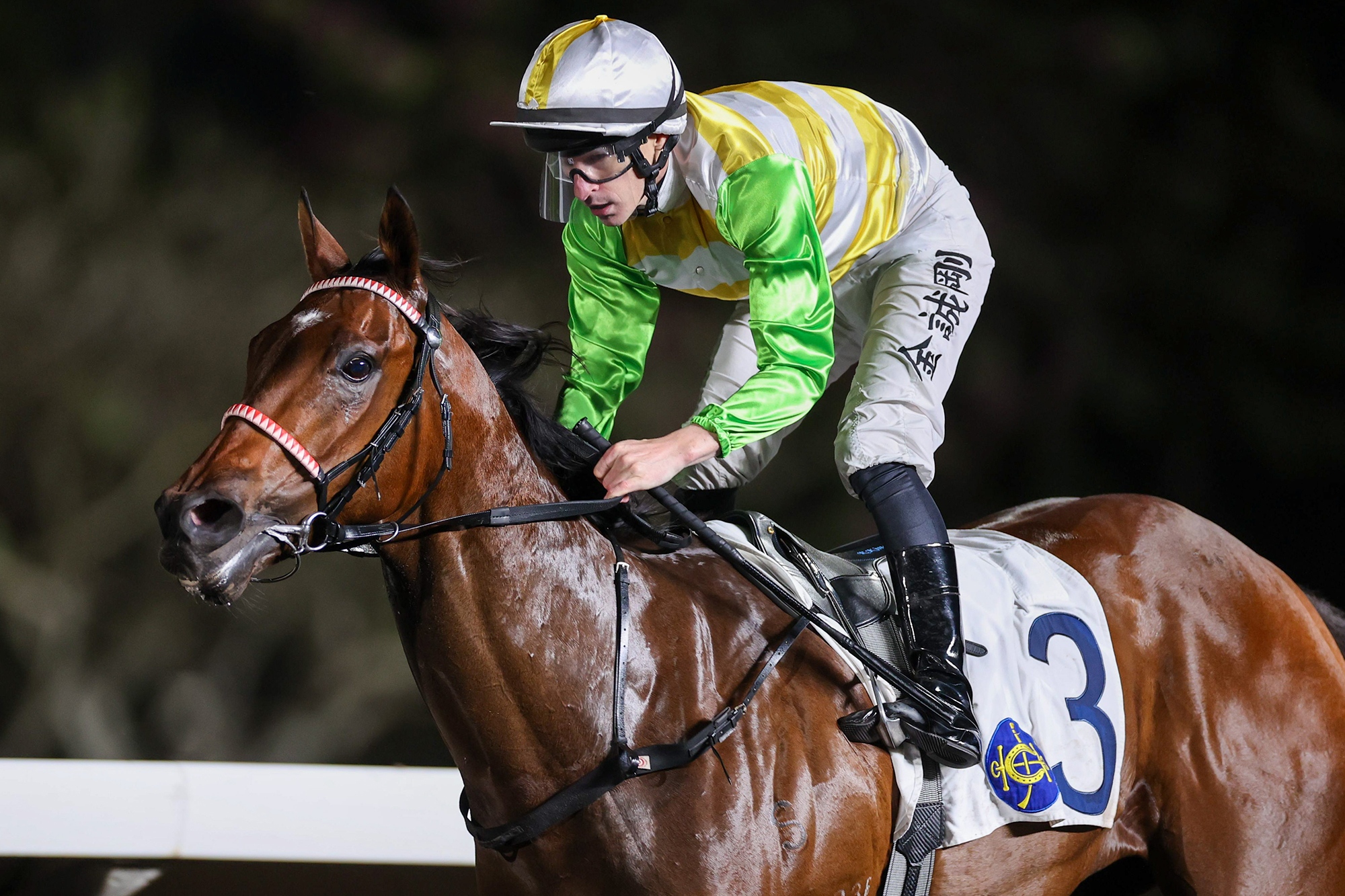Top Five: Japan’s Most Iconic Wins At The Hong Kong International Races
It’s 29 years since Fujiyama Kenzan became the first Japanese-trained winner at the Hong Kong International Races (HKIR), but where does that success rank among Japan’s most iconic wins at the event?
Top Five: Japan’s Most Iconic Wins At The Hong Kong International Races
It’s 29 years since Fujiyama Kenzan became the first Japanese-trained winner at the Hong Kong International Races (HKIR), but where does that success rank among Japan’s most iconic wins at the event?
3 December, 2024JAPAN’S RAIDERS are an intrinsic part of the Hong Kong International Races, having won 20 times at the December event since 1995. Among those victories are some of the HKIR’s most iconic moments – races of especial significance that have thrilled, excited, and lifted the protagonists and the contests above and beyond even the high bar of sporting achievement the event is famous for.
This year’s Japanese raiding party features the brilliant filly Liberty Island, her fellow Classic heroine Stellenbosch, and star miler Soul Rush, and as they ready for the fray at Sha Tin, Idol Horse looks back at what it considers to be Japan’s five most iconic wins, as well as a few that didn’t quite make the cut but are most certainly worthy of mention.

5. Maurice’s Mile
Hong Kong-trained horses had dominated the G1 Hong Kong Mile for nine years straight when Maurice turned up at Sha Tin in 2015. The Noriyuki Hori-trained colt had won five from five that year, including Japan’s two majors at the distance, the G1 Yasuda Kinen and the G1 Mile Championship, but he was to face his stiffest opponent yet, Hong Kong’s own brilliant miler, Able Friend.
The John Moore-trained Able Friend was the defending champion and had started his season in the G2 Premier Bowl with the best performance that year by any horse in the world over 1200m. But then came a shock turn-around in his Hong Kong Mile lead-up, defeat in the G2 Jockey Club Mile, when third at odds of 1.4.
The Sha Tin faithful were unperturbed and their mighty hero was the 1.7 favourite to see off the powerful Japanese raider. To add spice, the clash also brought together two of the world’s best jockeys: Maurice was ridden by the British ace Ryan Moore and Able Friend had Hong Kong’s Brazilian champion, Joao ‘Magic Man’ Moreira in the saddle.
Moreira thought he had the race sewn up when Able Friend hit the afterburners and quickened past Maurice with 300m to go. But Moore had not yet asked his mount for everything and when Maurice lengthened into full stride, he devoured the ground, powering past Able Friend to hand a length defeat, with Giant Treasure charging late to split the big two. It was a race to savour and one that elevated Maurice’s status to that of a global star.
4. Stay Gold’s Vase
Yutaka Take’s intuitive brilliance came to the fore in the 2001 G1 Hong Kong Vase as Stay Gold, the stalwart veteran of many a Japanese Group 1, bagged his second overseas major of the year. The Shadai home-bred raced 50 times across five seasons and was a mainstay of Japan’s biggest races, placing second in the G1 Tenno Sho Spring, second in the G1 Tenno Sho Autumn (twice), second and third in the G1 Takarazuka Kinen, and third in the G1 Arima Kinen.
Having nailed a famous win in the G2 Dubai Sheema Classic that March, Stay Gold headed to Sha Tin in December for his career finale off a typically solid fourth behind Jungle Pocket in the G1 Japan Cup. That performance ensured Stay Gold was the 2.0 favourite in a high-class line-up for the Vase, but Frankie Dettori on Godolphin’s Ekraar was not going to make things easy for the entire and set out to establish a significant lead with an early move from the 600m mark.
Dettori had stolen six lengths on the field entering the home straight, but Take had spotted the move and had been winding-up Stay Gold for a strong stretch drive. With that ground still to make up through the final 300m, the Japanese raider faced a tough task, yet Take had judged his race to perfection, driving Stay Gold past the weakening Ekraar close home to win by a head, despite dropping his right-hand rein momentarily when his mount hung in at the 200m point.
Japan’s greatest rider, Take, defeating arguably the world’s best at that time, Dettori, in such circumstances was another important boost to Japanese confidence, at a time when Japan’s horsemen and their horses were proving their merits with increased frequency on the international stage.
3. Maurice In The Cup
If the Hong Kong Mile marked Maurice’s arrival on the world scene, his G1 Hong Kong Cup victory 12 months later emphasised his brilliance and resilience, and showed that he was indeed a champion of the highest order.
The five-year-old had a mixed yet impressive campaign: injury prevented his planned participation in Dubai in the spring but he came back to win the G1 Champions Mile under Moreira at Sha Tin in April; a quick turnaround from that venture meant training in isolation through post-import quarantine, which contributed to a shock defeat when second in the G1 Yasuda Kinen at Tokyo in June; the bay was second again first-up for the autumn in the G2 Sapporo Kinen; then came a brilliant win in the G1 Tenno Sho Autumn to prove 2000m really was no issue at all.
Moore was in the plate again for Maurice’s Hong Kong Cup run and this time Japan’s champ was the 1.7 favourite. He won like one, too. The big horse, by now dubbed ‘The Beast from the East’, was tight to the rail, 15 lengths behind the pace-setting A Shin Hikari, turning for home, but Moore asked him to advance and he did so smoothly and powerfully along the inner. Maurice shifted around the weakening leader with 200m to go and surged to the line for an impressive three-length win.
It was a true champion’s performance by the five-year-old and a rare feat, too, not only to win two different HKIR contests, but also to join Eishin Preston and Jim And Tonic as only the third foreign-trained horse to win three Group 1 majors at Sha Tin.
2. Take And A Shin Hikari
There was a whole lot of ‘wow’ about A Shin Hikari’s 2015 Hong Kong Cup triumph. When Yutaka Take cut loose the grey colt and let him race through an opening 400m split of 26.13s followed by four exquisitely timed fractions all of 23 seconds and change, jaws dropped.
Entering the back straight, Take had his mount, a 37-1 longshot, mind you, the best part of three lengths clear of Dan Excel with the field stretched out behind. A Shin Hikari still had two lengths and more on his anxious rivals when, with 350m remaining, Take switched his whip to his left hand and gave a smack. The colt responded and continued to do so as Take drove him on, maintaining effort and rhythm to score a brilliant victory in a time of 2m 00.60s. It was exceptional 2000m pacing.
The scenes afterwards were epic as the four-year-old and his great jockey returned to adoration from the Japanese contingent and warm respect from the Sha Tin faithful. It was Take’s first overseas Group 1 win since Admire Moon’s success in the Dubai Duty Free of March 2007.
1. Lord Kanaloa’s Second Sprint
If we’re talking iconic, then nothing from a Japanese perspective tops what Lord Kanaloa did at Sha Tin, not once but twice. His first Hong Kong Sprint win in 2012 put him squarely in the global spotlight and his eve-of-race gallop, when he blitzed across the Sha Tin turf under work rider-turned-trainer Shogo Yasuda, in front of a handful of startled work watchers, is now embedded in HKIR folklore.
Japan’s greatest sprinter repeated his fast workouts when he returned in 2013, galloping solo down the Sha Tin straight through a final 400m split of 20.4s, covering the final 200m in a swift 10.2s just four days out. He topped things off with another strong gallop the day before the race.
The entire’s performance on the Sunday itself was stunning. Lord Kanaloa was the 1.8 favourite despite being drawn 12 of 14 and showed that the draw doesn’t matter when you’re that far superior to your rivals. The five-year-old made top-class sprinters look second rate when he cruised to the front rank off the turn and then sped clear under Yasunari Iwata, sprinting away for an HKIR record winning margin of five lengths.
It was a devastating display of sprinting and a fitting finale to an extraordinary career, one that also included a brilliant win over a stiff mile at Tokyo in the G1 Yasuda Kinen. Lord Kanaloa’s sensational second Hong Kong Sprint grabbed attention around the world and is still talked about 11 years on.
Honourable Mentions
Eishin Preston’s 2001 Hong Kong Mile only just missed the top five. The Shuji Kitahashi-trained four-year-old rocked up at odds of 23-1 and brushed aside Hong Kong’s emerging star miler Electronic Unicorn by three and a quarter lengths.
Fujiyama Kenzan’s breakthrough victory in the 1995 Hong Kong Cup certainly holds iconic status for being the first for a Japanese-trained horse at the HKIR but it doesn’t quite make the cut. The seven-year-old was trained by that pioneer of Japanese offshore raids, Hideyuki Mori, and it was Masayoshi Ebina who drove him to victory.

Satono Crown’s Hong Kong Vase win in 2016 also just misses out on the top five, but is iconic nonetheless for its historic significance. The colt’s trainer Noriyuki Hori had already saddled Maurice that day to win the Hong Kong Mile and when Joao Moreira lifted Satono Crown through the final 300m to catch Highland Reel at the post, Hori became the first overseas trainer to secure an HKIR double.
Moreira was involved in another success that bordered on the iconic when Glory Vase won the Hong Kong Vase in 2021. Tomohito Ozeki’s charge had won the same race under Moreira two years prior, but had missed the 2020 running. He returned with a deep-closing surge to overhaul the British runner Pyle Driver by a length.
Loves Only You’s short-head win in the 2021 Cup was also special and followed her April 2022 win at Sha Tin in the QEII Cup, while Admire Mars’ half-length win in the 2019 Mile not only scuppered Hong Kong champion Beauty Generation’s attempt at a hat-trick in the race, but also was poignant as it came soon after the death of the colt’s owner Riichi Kondo ∎





